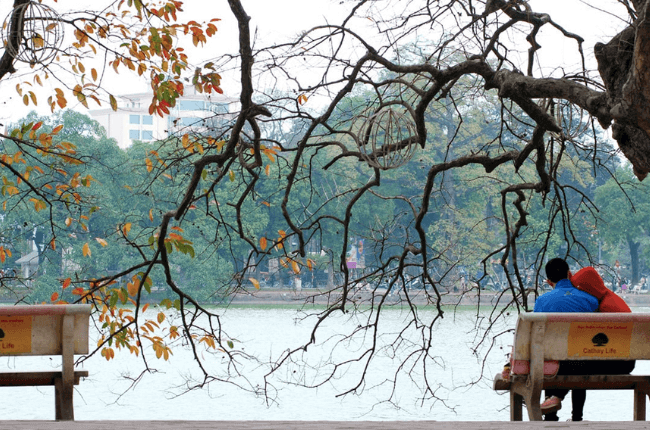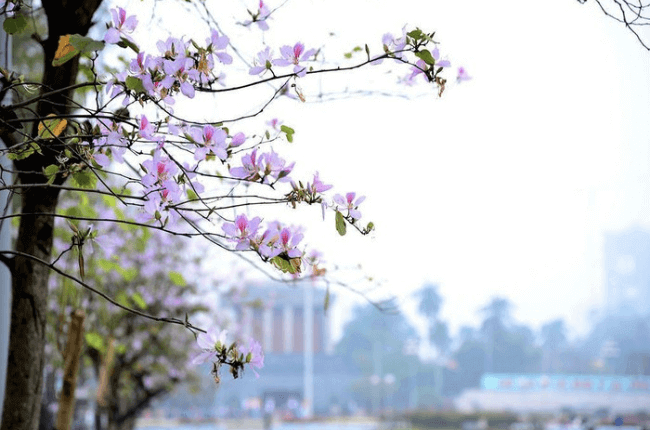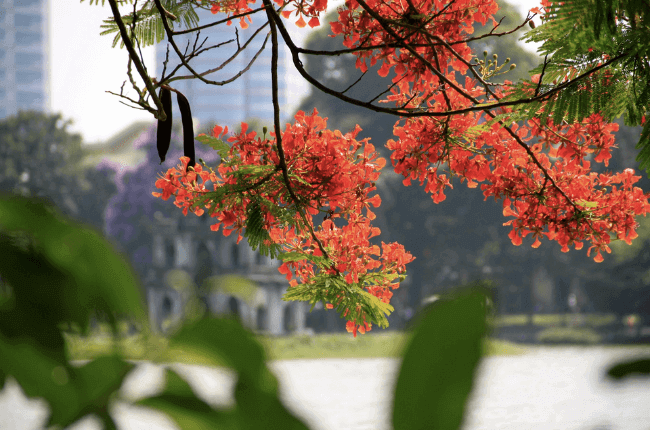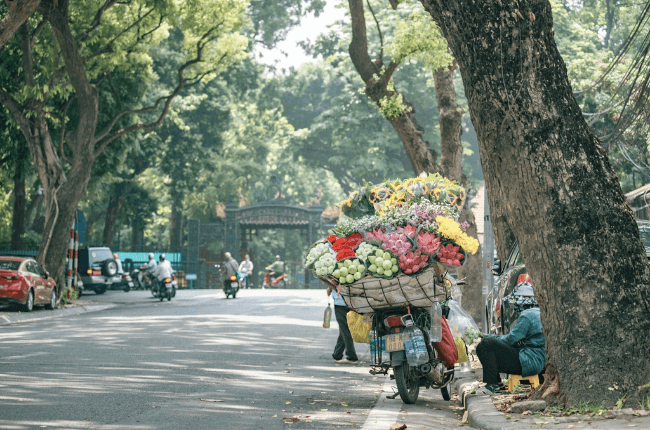Hanoi experiences four distinct seasons – Winter (December-February), Spring (mid-February-April), Summer (May-October), and Autumn (November) – with dramatic temperature changes between seasons ranging from 12°C in winter to over 30°C in summer. Unlike Southern Vietnam’s simple dry/wet season pattern, Northern Vietnam’s capital offers a complete seasonal cycle that significantly impacts daily life and clothing choices.
Understanding Hanoi’s weather patterns is crucial for residents and visitors, as seasonal transitions happen suddenly without warning, requiring immediate wardrobe adjustments and lifestyle adaptations.
Winter in Hanoi: The Cold Reality

Winter in Hanoi (December through early February) brings surprisingly bitter cold with temperatures dropping to 12°C at night, made worse by high humidity and the complete absence of heating systems in homes and apartments.
Winter Characteristics
Winter begins suddenly in early December or sometimes mid-November. One day you’re comfortable in light clothing, the next day you need heavy winter jackets comparable to Canadian winter wear. The cold intensifies progressively through January, reaching its peak in mid-January.
Essential Winter Survival Tips
- No heating systems exist – apartments and houses lack central heating
- Thick bedding required – invest in heavy duvets and blankets
- Electric hot water bottles – readily available Chinese imports provide essential warmth
- Layered clothing – thick gloves, woolen hats, and long scarves become necessities
- Motorcycle adaptations – riders use one-handed driving, keeping the other hand pocketed for warmth
The humidity makes temperatures feel much colder than actual readings, especially during morning commutes and evening returns home.
Explore More Teaching Tips: 100+ Essential Vietnamese Phrases for Travel & Daily Life
Spring in Hanoi: Beautiful but Challenging

Spring (mid-February through April) brings pleasant 22°C daytime temperatures but creates the infamous “Mouldy March” due to constant moisture, drizzle, and humidity that causes paint to peel and clothes to develop musty odors.
Spring Weather Patterns
Temperatures hover around 22°C during the day, dropping to 17°C at night. Unlike monsoon season’s sudden downpours, spring brings persistent drizzle and atmospheric moisture lasting entire days.
March Moisture Problems
- Paint deterioration – wall paint suddenly peels and develops mold overnight
- Clothing challenges – items never fully dry, requiring tumble dryers
- Musty odors – high moisture prevents thorough drying
- Recommended strategy – complete major laundry in January instead
Spring Clothing Requirements
Walking requires only light cardigans, but motorcycle riders still need jackets during morning and evening commutes, switching to cardigans during midday warmth.
Summer in Hanoi: Intense Heat Period

Summer arrives suddenly with temperatures jumping from 22°C to 32°C overnight, then climbing progressively higher until mid-June when temperatures exceed 30°C both day and night for extended periods.
Summer Intensity
Once summer begins, there’s no reverting to spring temperatures. The heat only increases daily, making walking difficult due to immediate perspiration. Summer extends far beyond typical Western seasons, with September and October remaining very hot.
Summer Survival Strategies
- Frequent cooling – ice cream and cold drinks become necessities
- Swimming pools – utilize Hanoi’s numerous pool facilities
- Limited outdoor activities – avoid extended walking during peak heat
- Night planning – temperatures rarely drop below 30°C even at night
Discover Related Guides: Tipping In Vietnam: How Much & For Whom Should You Tip?
Autumn in Hanoi: The Perfect Season

Autumn (November) is universally considered Hanoi’s best season, offering consistently pleasant 28°C temperatures both day and night, ideal for outdoor activities without excessive perspiration.
Autumn Advantages
The transition from summer to autumn happens as suddenly as other seasonal changes. Autumn provides optimal conditions for running, cycling, and walking, resulting in increased outdoor activity participation.
Why Autumn Excels
- Comfortable temperatures – warm but not oppressively hot
- Consistent conditions – day and night temperatures remain stable
- Outdoor activity friendly – exercise possible without immediate sweating
- Social season – more people engage in outdoor activities
Continue Learning: Before Getting Tattoos in Vietnam: Your Essential Guide
Weather Transition Patterns
All seasonal changes in Hanoi happen suddenly without warning, requiring immediate adaptation in clothing, lifestyle, and daily planning rather than gradual adjustment periods.
Preparation Strategies
- Seasonal wardrobe planning – maintain clothing for all four seasons
- Weather monitoring – sudden changes require constant awareness
- Housing adaptations – prepare for heating/cooling needs
- Activity scheduling – plan outdoor activities according to seasonal comfort
Common Newcomer Mistakes
Many newcomers assume Vietnam maintains consistent summer weather year-round, arriving unprepared for winter conditions and scrambling for appropriate clothing at the last minute.
Essential Weather Survival Guide
Understanding Hanoi’s dramatic seasonal variations prevents uncomfortable surprises and ensures proper preparation for each season’s unique challenges and requirements.
Year-Round Preparation Checklist
- Winter gear – heavy jackets, warm bedding, electric hot water bottles
- Spring equipment – waterproof clothing, dehumidifiers, tumble dryer access
- Summer essentials – cooling strategies, swimming access, lightweight clothing
- Autumn optimization – outdoor activity gear, comfortable exercise clothing
Housing Considerations
- No central heating – personal heating solutions required
- Moisture management – dehumidification equipment for spring
- Cooling systems – fans or air conditioning for summer
- Bedding variety – seasonal bedding storage and rotation
The weather remains a primary conversation topic throughout the year in Hanoi, unlike Southern Vietnam where weather discussions focus primarily on rainy season timing.
Hanoi’s four distinct seasons create a dynamic living environment requiring seasonal adaptation and preparation. Understanding these weather patterns helps newcomers and long-term residents alike navigate the dramatic temperature and humidity changes that define life in Vietnam’s capital city.







